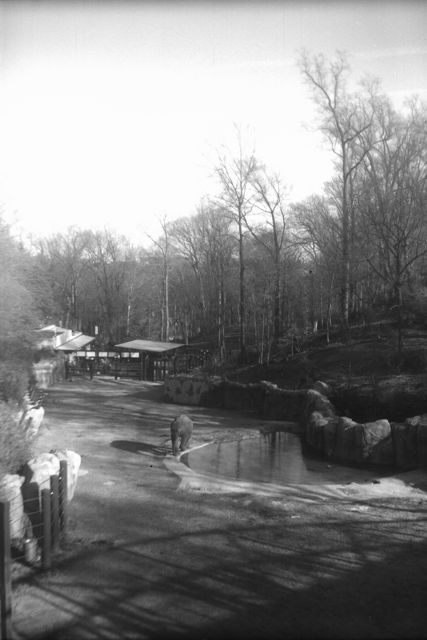The Beau Brownie was offered in a variety of colors, the most collectible being the rose and green varieties. See the range of colors, and the really keen original boxes - like little monochromatic Mondrians - here. I have the more sedate burgundy and black model, which is no less stylish and rather more dignified than the rose or green variations that go for exponentially more than I paid for this.
It's a fixed lens and fixed-focus camera. The viewfinders - one each for portrait or landscape orientation - are too clouded over to be of much use. You have the choice of two mid-range apertures, which can be selected by a metal bar at the top of the box that can be pulled out or left in depending on your desired exposure. The shutter mechanism is unusual, though I don't know if that's because something's wrong with my camera. When you release the shutter, a spring loaded rig bounces out of the way to briefly reveal the aperture and through that expose the film. A spring loaded shutter is not in itself unusual but this one is the springiest and bounciest shutter release in my collection.
I loaded it with Fuji Acros and on a sunny day this 100 ASA film was exposed pretty much on the nose. I took the camera to the zoo:
I also brought my D700 with an 80-200 f2.8 lens (no VR) and shot a number of sharp, tightly-composed portraits of this pachyderm. But this is how people made pictures at the zoo eighty years ago. A roll of 120 produces 8 6x9 exposures. If you look closely, you can see a red panda in this one.
A pair of ducks at the frog pond were eager and closer subjects, but the lens doesn't focus enough for an intimate portrait.




No comments:
Post a Comment